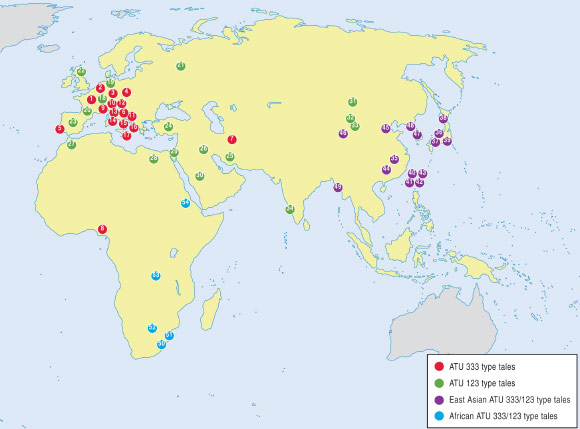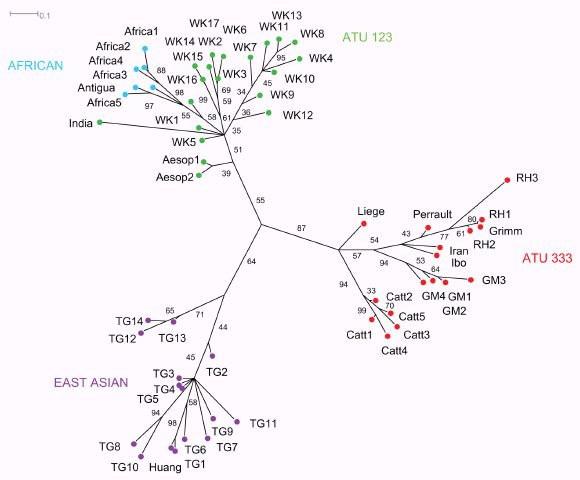According to Durham University anthropologist Dr Jamshid Tehrani, evolutionary analysis can be used to study similarities among folktales. His findings demonstrate that the Little Red Riding Hood shares an ancient root with another popular folktale the Wolf and the Kids, although the two are now distinct stories.

Little Red Riding Hood by Arthur Rackham, 1909.
Since Jacob and Wilhelm Grimm published their compilation of folktales – “Children’s and Household Tales” – two centuries ago, scientists have noted that many plots from those European stories are similar to those from other stories all over the world.
For instance, highly similar stories to the Little Red Riding Hood have been observed in African and East Asian cultures.
But whether these stories actually a share a common descent and are indeed the same type of tale has been difficult to demonstrate based on previous approaches.
Dr Tehrani has used phylogenetic analysis to study relationships among different folktales.

This map shows locations from which the folktales studied were sourced. Numbers in the circles refer to the variants analyzed. Image credit: Tehrani JJ.
Phylogenetics was originally developed to investigate the evolutionary relationships between biological species, by constructing a taxonomy tree that represents relationships of common ancestry based on shared traits.
Folktales are an excellent target for phylogenetic analysis because they evolve gradually over time, with new parts of the story added and others lost as they get passed down from generation to generation.
By focusing on the Little Red Riding Hood (labeled ATU 333) and related tales, the anthropologist analyzed 72 plot variables, such as character of the protagonist, the character of the villain, the tricks used by the villain to deceive the victim, and so on.
He found that the African tales are not actually of the Little Red Riding Hood type, but instead are related to a tale called the Wolf and the Kids (labeled ATU 123).

This image shows a maximum clade credibility tree returned by the Bayesian phylogenetic analysis of the folktales. Major groupings are labeled by region and/or ATU international type and indicated by the colored nodes. Numbers beside the edges represent the percentage of trees in the Bayesian posterior distribution of trees in which a given node occurred. The scale bar indicates the average number of changes per character along a given edge. Sub-types are indicated in the taxa labels: RH – Little Red Riding Hood, GM – Story of Grandmother, Catt – Catterinella, WK – the Wolf and the Kids, TG – Tiger Grandmother. Image credit: Tehrani JJ.
East Asian tales did not group with either type but probably evolved by blending together elements of both types of stories.
“Folktales are excellent targets for phylogenetic analysis because, like biological species, they evolve over generations and adapt to new environments as they spread from region to region. Since folktales are mainly transmitted via oral tradition, it can be difficult to study their development using conventional tools of literary analysis, because there are so few historical texts,” explained Dr Tehrani, who reported the results in the journal PLoS ONE.
“My study shows how we can overcome these difficulties by using the same approach that biologists have used to fill the gaps in the fossil record.”
______
Bibliographic information: Tehrani JJ. 2013. The Phylogeny of Little Red Riding Hood. PLoS ONE 8 (11): e78871; doi: 10.1371/journal.pone.0078871







